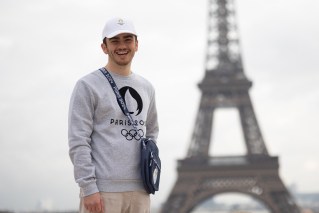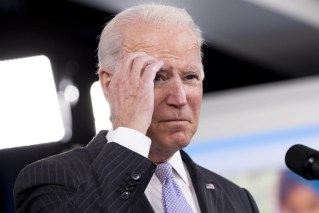How West Indies cricketers went from superheroes to mere mortals in one generation
Many a former Australian Test batsman still flinches at the thought of the West Indies bowling attack in the 1980s. Those were the days, writes Jim Tucker.


West Indian fast bowler Andy Roberts in his prime. (Image: Wisden)
Former Australian batsman Mark Waugh made the astonishing observation this week that the pacemen of the West Indies weren’t bowling enough bouncers.
Imagine! For 25 years from the mid-1970s, he would have been put in a straitjacket and declared insane for even thinking such a thought.
Generations of Australian batsmen, still smarting from old welts and bruises, should have lashed him with their old Gray Nicolls and buried him under a mountain of protective gear.
Waugh knew well enough what he was saying with his “bouncers” comment after only 14 were counted in the opening 60-something overs to the Aussie batsmen at Adelaide Oval on Thursday. It was fast bowling devoid of intimidation.
As a Fox Sports cricket commentator, Waugh was speaking from his own experience playing against the fire of the West Indian quicks throughout the 1990s.
As his then-ghost writer for a column, I got Waugh’s first-hand insight into what it was like facing the West Indian fast bowlers on the history-making 1995 tour of the West Indies.
In every Test innings he played on that tour, the first two balls he faced were bouncers. Every innings. An accidental beamer from Courtney Walsh in Antigua thudded into his back. Elbow, arm, fingers…all were stung by thunderbolts on that tour.
He reckoned that brother Steve was hit on the body 10 times at Jamaica’s Sabina Park during his epic 200 that sealed the first series win over the West Indies anywhere in the world for 15 years.
It was a full mental and physical examination under extreme pressure to achieve a bumper victory. For that reason, Mark rated his own 126 in Jamaica as the best Test century of his career.
The young Justin Langer never played a Test on that tour but he was the cricket-obsessed Marnus Labuschagne of his day. Waugh also rated Langer his scariest room-mate: “He talks in his sleep and one night started a dialogue with a West Indian accent.” Even Labuschagne would applaud that next-level eccentricity.
Any long-term cricket fan will recount stories of Australia’s duels with the Windies down the decades.
Back in the late 1970s-early ‘80s, you’d count on more than 14 bouncers in the spicy first hour before the drinks break when Michael Holding, Andy Roberts, Colin Croft, Wayne Daniel, Malcolm Marshall and Co were peppering Aussie batters.
Far fewer understand the significance of cricket to the West Indies. It is the one thing that unites 17 or so independent nations in the English-speaking Caribbean. All those nations have their own national identities and political clash points. Cricket is the one uniting force, although it loosens at times.
It would be like pulling together a few islands in the Torres Strait, Papua New Guinea, Singapore and Java and expecting a coherent East Indies team.
Barbadian history professor Dr Hilary Beckles once explained to me why cricket on the curriculum at the University of the West Indies in his homeland made such sense.
“Cricket is a window through which to view the history of the region. In the middle of the 19th century, it was essentially a game played by the white elite,” Beckles said.
“One hundred or so years later, it had become a game for the masses. Cricket is an area of liberation for the ability of black people.”
Caribbean households have always passed down a spoken history of cricket in their families across generations. It’s sad that social media, American sports and so on have diluted this pure cricket heritage.
Never question how much cricket means to the Caribbean. Famed batsman Sir Frank Worrell is featured on the $5 banknote of Barbados. I visited the street named after Viv Richards in Antigua. In Trinidad, Brian Lara’s hilltop mansion is on land gifted to him by the government after his other-worldly 375 in 1994.
Labuschagne may be on bonuses for his recent glut of centuries but he isn’t about to bump Banjo Paterson’s image off our $10 bill or be given a vacant block of land on North Stradbroke Island.
Imitation is a great form of flattery. When West Indian cricketers started wearing a jewellery store of gold bracelets so it became a thing for Aussie cricketers to do the same. The Windies were cricket’s aspirational team.
You imbibe cricket at every turn in the Caribbean. When the late David Hookes arrived in Barbados to follow the 1995 tour as a commentator, the customs official greeted him with a classic line.
“How’s de jaw, man?” Steve Waugh recounted of the Hookes’ moment in one of his tour diaries. He was referring to the day Roberts smashed Hookes’ jaw during World Series Cricket a full 17 years earlier.
On the same tour, the West Indians and Australians often stayed in the same hotels. That created a curious problem for then-Australian scorer Mike Walsh.
The middle-aged Walsh had never been more popular with the ladies or rather those phoning his room instead of Windies paceman Courtney Walsh.
The West Indies were one-of-a-kind tourists too. On one Australian tour they were sponsored by KFC. Imagine the eye-popping pedestrians of Brisbane ogling at Curtley Ambrose and Co picking up a car-load of giant KFC buckets at the Eagle Street Pier outlet. It happened.
Ok, this is something of a homage to West Indian cricket. Many will share it because they’d love to see a powerful, crowd-pleasing Windies Test side again.
Sadly, any cricket fan in his or her early 20s never got to ogle live at cricket’s great entertainers. The glorious strokemaking of Brian Lara, Viv Richards, Gordon Greenidge and Desmond Haynes is now just used in promo footage to urge cricket fans to watch the limited generation of performers now representing the Windies.
Now, the once mighty and magnetic world champions from the Caribbean are being given advice on how not to lose by so much. Bowl more bouncers.
I count myself lucky that I saw the mastery of Bjorn Borg wielding a wooden tennis racquet at Wimbledon, Greg Norman striking pure drivers off the deck with a persimmon clubhead and Paul McLean slotting key penalty goals as a toe-poker with a heavy leather footy.
I treasure seeing Steve Waugh stand up to Ambrose on a green pitch in Trinidad, the Richards’ strut before his first blazing cover drive and that Kim Hughes century against the best Windies pacemen on a spicy MCG pitch. It goes on.
Is sport of another era better than today? Not at all. It’s just different and engaging in its own way.
There are now dwindling numbers who saw Don Bradman bat live. For all his records, he struck only six sixes in his long Test career. Imagine a batsman of today slaughtering attacks as “The Don” did but sending so few shots into orbit over the fence.
Memories are always freshened. New stars always ignite magic moments for a fresh generation. Those deeds will be recounted in another 30 years.
Ash Barty’s heroics at Wimbledon and the Australian Open. Cam Smith’s epic 30 on the back nine at St Andrews and THAT putt on the Road Hole. Both will be retold in 2052 just as vividly as they are today.
Labuschagne and Steve Smith are doing it for a generation right now in cricket.
That’s the thing about great sport. Cling to your own memories and be grateful you saw the best, even if for West Indies cricket, those peak moments were in the 1980s.
Jim Tucker has specialised in sport, the wider impacts and features for most of his 40 years writing in the media. He covered cricket during the West Indies’ glory years, including the historic 1995 tour of the Caribbean.












